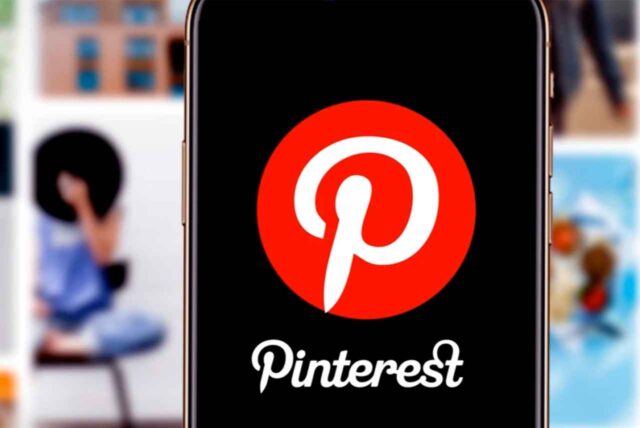Pinterest has evolved from a simple visual bookmarking tool to a robust platform for product discovery and promotion. With its unique blend of visual appeal and search functionality, Pinterest offers businesses an excellent opportunity to showcase their products and drive traffic to their online stores. Here’s a comprehensive guide on how to effectively use Pinterest for product promotion and discovery.

1. Set Up a Business Account
To leverage Pinterest for product promotion, start by creating a business account. A business account offers additional features, such as analytics and advertising tools. Here’s how to set it up:
- Go to Pinterest for Business: Visit the Pinterest for Business page and click “Join as a Business.”
- Fill Out Your Profile: Complete your profile with a clear business name, description, and logo. Make sure to include relevant keywords to enhance discoverability.
- Claim Your Website: Claiming your website allows you to access analytics and display your logo on any pins that come from your site.
2. Create Engaging Pins
High-quality visuals are essential on Pinterest. Create eye-catching pins that showcase your products effectively. Here are some tips for creating engaging pins:
- Use High-Quality Images: Use bright, high-resolution images that reflect your brand’s aesthetic. Vertical images (2:3 ratio) tend to perform better on Pinterest.
- Add Text Overlays: Incorporate text overlays to provide context or highlight key features. Ensure the text is readable and complements the image.
- Include a Call to Action (CTA): Encourage users to take action, whether it’s visiting your website, signing up for a newsletter, or making a purchase.
3. Optimize for Search
Pinterest operates like a visual search engine, so optimizing your pins for search is crucial. Consider the following:
- Use Keywords: Research relevant keywords related to your products and incorporate them into your pin descriptions, titles, and boards. Use Pinterest’s search bar for keyword inspiration.
- Hashtags: While not as prominent as on other platforms, using a few relevant hashtags can help categorize your content and improve discoverability.
4. Organize Your Boards
Create boards that reflect your brand and organize your products logically. This not only makes it easier for users to navigate but also enhances your profile’s appeal. Here’s how to do it:
- Create Themed Boards: Organize boards based on product categories, seasonal themes, or specific promotions.
- Curate Relevant Content: In addition to your product pins, curate content from other creators that aligns with your brand. This positions you as a helpful resource and can increase engagement.
5. Leverage Rich Pins
Rich Pins are a powerful feature that provides more context about your products. They automatically sync information from your website to your pins, making them more informative. There are three types of Rich Pins:
- Product Pins: Include real-time pricing, availability, and product descriptions. This encourages users to make informed purchasing decisions.
- Recipe Pins: Perfect for food brands, these pins include ingredients, cooking times, and serving sizes.
- Article Pins: Great for content creators, these pins show headlines, authors, and descriptions to drive traffic to blog posts.
To enable Rich Pins, apply through Pinterest and ensure your website is set up correctly.
6. Utilize Video Pins
Video content can significantly enhance engagement on Pinterest. Create short, compelling videos to showcase your products, highlight usage, or tell your brand story. Here are some tips for effective video pins:
- Keep It Short: Aim for videos that are 15-30 seconds long to maintain viewer interest.
- Engaging Thumbnails: Use eye-catching thumbnails to entice users to click on your videos.
- Subtitles: Adding subtitles makes your videos accessible and engaging even when muted.
7. Promote Your Pins
Consider using Pinterest Ads to promote your products further. Promoted Pins can increase your reach and visibility. Here’s how to get started:
- Choose Your Campaign Objective: Select objectives like awareness, engagement, or conversions based on your goals.
- Target Your Audience: Use Pinterest’s targeting options to reach specific demographics, interests, and behaviors.
- Monitor Performance: Use Pinterest Analytics to track the performance of your promoted pins and make adjustments as needed.
8. Engage with Your Audience
Interaction is key to building a community on Pinterest. Engage with your audience by:
- Responding to Comments: Encourage feedback and respond to comments on your pins to foster a sense of community.
- Following Relevant Accounts: Follow other brands and creators in your niche to stay updated on trends and engage with their content.
9. Analyze and Adjust Your Strategy
Regularly monitor your Pinterest analytics to assess your performance. Look at metrics such as impressions, clicks, saves, and engagement rates. Use this data to refine your strategy, focusing on what works best for your audience.
Conclusion
Using Pinterest for product promotion and discovery can significantly enhance your brand’s visibility and drive traffic to your e-commerce site. By creating engaging content, optimizing for search, leveraging features like Rich Pins, and actively engaging with your audience, you can harness the power of Pinterest to boost your e-commerce sales. Start implementing these strategies today and watch your Pinterest presence flourish!


No responses yet